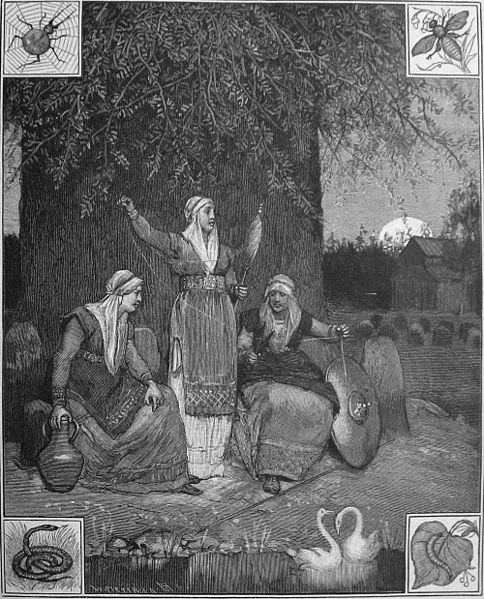Veleda was seeress of the Bructeri, a Germanic people who achieved some prominence during the Batavian rebellion of AD 69–70, headed by the Romanized Batavian chieftain Gaius Julius Civilis, when she correctly predicted the initial successes of the rebels against Roman legions.
Statue of Veleda by Laurent Marqueste (c. 1877)
"Veleda, prophetess of the Germans," by Juan Scherr (1882)
Velleda, as imagined in a 19th-century painting by Charles Voillemot.
In Germanic paganism, a seeress is a woman said to have the ability to foretell future events and perform sorcery. They are also referred to with many other names meaning "prophetess", "staff bearer", "wise woman" and "sorceress", and they are frequently called witches or priestesses both in early sources and in modern scholarship. In Norse mythology the seeress is usually referred to as völva or vala.
Sculpture of the Germanic seeress Veleda, by Hippolyte Maindron, 1844, in Jardin du Luxembourg, Paris.
The fate of men was always in the hands of female powers. An illustration of the Norns who spin the threads of fate at the foot of Yggdrasil, the tree of the world. Beneath them is the well Urðarbrunnr with the two swans that have engendered all the swans in the world.
The seeress Veleda as painted by Jules Eugène Lenepveu, 1883
It appears to have been Ganna herself, and her king Masyos, who informed Tacitus of the Semnoni religious practices. An illustration of the Semnoni sacred grove, which is identified with the Grove of Fetters in Scandinavian heroic legend.







